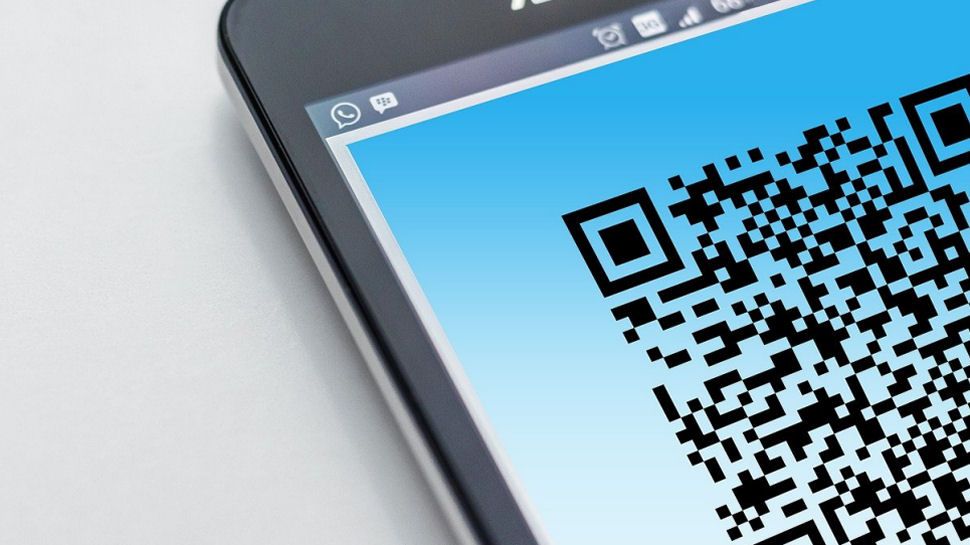QR codes finally find their groove during the pandemic
QR codes: a COVID tech success story

The challenges raised by the COVID-19 pandemic has brought to the spotlight a myriad of different technologies. From cloud computing to video conferencing, robotics to the best ecommerce platforms, technology is helping to define the COVID ‘new normal’ – a world that is digital-first and more connected than ever before. One ingenious piece of technology, whilst it may not grab all the headlines, is quietly carving out an integral place for itself in the COVID economy: the humble QR code.
Most people are probably familiar with QR codes: Square patterns of machine-readable data. It works similarly to barcodes but encodes significantly more data within the code resulting in applications across a wider range of end use-cases.
Before the pandemic
Even before COVID-19, QR codes thrived in several key industries. The technology was originally invented in Japan in 1994 for tracking machine parts in the automotive industry, and to this day many firms continue to utilize QR codes to manage their global supply chains.
The fashion industry has led the way in pioneering customer-facing supply chain QR codes. ASOS, a major global fashion retailer, recently announced its ‘Circular Collection’. All the clothing includes a label with a QR code that a customer can scan to learn about the provenance of the product. In so doing, the QR code enables the fashion industry to build a message of transparency and build trust with customers that what they are buying is ethically made; improving customer experience.
For millions of people across Asia, Africa and Latin America, QR codes are synonymous with another use case: payments. Over 3.5 billion people worldwide now own smartphones, with QR codes able to interact with a mobile wallet on these devices to initiate payment. The technology is an attractive option for merchants since it is cheaper than EMV (credit/debit card) payments on traditional point of sale (POS) terminals.
The figures speak for themselves. A recent report from NTT DATA and GSMA, the mobile industry body, found that the Chinese QR codes payments market hit $13 trillion in 2018 – fueled by the runaway success of homegrown businesses like Alipay and WeChat Pay.
Mobile payments have boomed in developing markets as a way for a population reliant on smartphones to access financial services. GSMA predicts Brazil’s annual digital transactions market will reach $51.4 billion by the end of 2020, $32 billion in Mexico, and $8.1 billion in South Africa.
Are you a pro? Subscribe to our newsletter
Sign up to the TechRadar Pro newsletter to get all the top news, opinion, features and guidance your business needs to succeed!
The COVID new normal
So, where does COVID-19 fit into the story of QR codes? In the early days of the pandemic, restaurants in England were asked to capture the names and addresses of all their customers. It was a decidedly analogue solution that slowed down contact tracing. This wasn’t the only problem in hospitality – menus were handled by a lot of people and difficult to clean. QR codes became the solution to both these problems.
By introducing QR codes that redirected the customer to an online menu, restaurants no longer needed printed menus. The process of “checking in” to a restaurant is now automated through QR codes too. Where QR codes were once a rarity, in a few short months they have become ubiquitous in restaurants and bars.
Retail has seen a similar trend in the UK. Sainsbury’s and Waitrose use QR codes to manage customer flow into the store; customers scan the code to join a virtual queue to enter the shop, avoiding the health risk of overcrowded queues as people wait to enter. Inside many shops, QR codes are now available to encourage customers to download their app, access a full range of customer services, and even exclusive discounts for use in-store. In the process, companies build a hyper-personalized experience for customers, connecting more closely with their needs and developing the loyalty so vital for business survival in the pandemic.
Paying for goods and services
When actually paying for goods and services, COVID-19 has accelerated uptake of digital and contactless payments and pushed cash into potentially terminal decline. It is worth noting regional distinctions in what this means for payments technology. Aforementioned hotspots for QR code payments like Asia, Africa, and Latin America will see a doubling down on this channel, as merchants look to reassure customers with a swift, contactless payment experience. Europe and North America will likely see further consolidation of their long-term status as bastions of contactless card or device payments at POS terminals – there will be no overnight takeover by QR code payments.
Nevertheless, as QR code technology filters into daily life in Europe in other sectors – payments may eventually follow. In May, PayPal launched a new feature allowing customers in the UK and 27 other countries to pay via their app by scanning a QR code generated by the seller. ‘Amazon Go’ stores are expanding across Europe and North America, spearheading a retail payments experience where consumers just need to scan their unique QR code on the app upon entry, take the goods they want and are charged automatically when they leave.
Healthcare benefits with the use of QR codes
Unsurprisingly, the most significant application of QR codes during the pandemic may well be its use in healthcare. To keep the virus under control, the Chinese government launched a nationwide system of colored QR codes called Health Code. Citizens are assigned a colored QR code correlated with their health status that they must present at entrances to public places like the subway, offices or shopping malls. A Green QR code allows freedom of movement whereas yellow or red require self-isolation.
The system, rolled out to Alipay’s 900 million users, has proven its worth in helping China prevent the virus returning to the heights seen in January, and allowed its citizens to return to something more akin to normality. Similar contact tracing programs utilizing QR codes have been rolled out across Asia and Europe, with varying effectiveness.
An exciting future
There is a huge potential untapped market for businesses to identify the next big opportunity for QR code technology. Telco players can help back expansion in new markets like Europe, supporting businesses as they look at opening up new mobile payment channels to align with customers growing appetite for more contactless channels as they eschew cash.
One final puzzle piece for QR codes is interoperability. Sustainable, global expansion of the technology requires national barriers in functionality to be minimized. NTT DATA recently partnered with The Bank of Ayudhya to enable Thai visitors to Japan to pay for goods and services in the country via Thailand’s My Prompt QR payment service. Such collaboration between businesses and governments will be vital going forward if QR codes are to continue transforming our world post-COVID-19.
Whatever happens, COVID-19 has showcased how relatively simple technology can almost overnight become one of the building blocks of a world turned upside down.
- Josep Alvarez, Head of Banking Practice at NTT DATA UK and everis.
- We've featured the best ERP software and best fleet tracking software.
Josep Alvarez is Head of Banking Practice at NTT DATA UK and everis. He has 20+ years’ experience working closely with the European banking sector on technology transformation.













